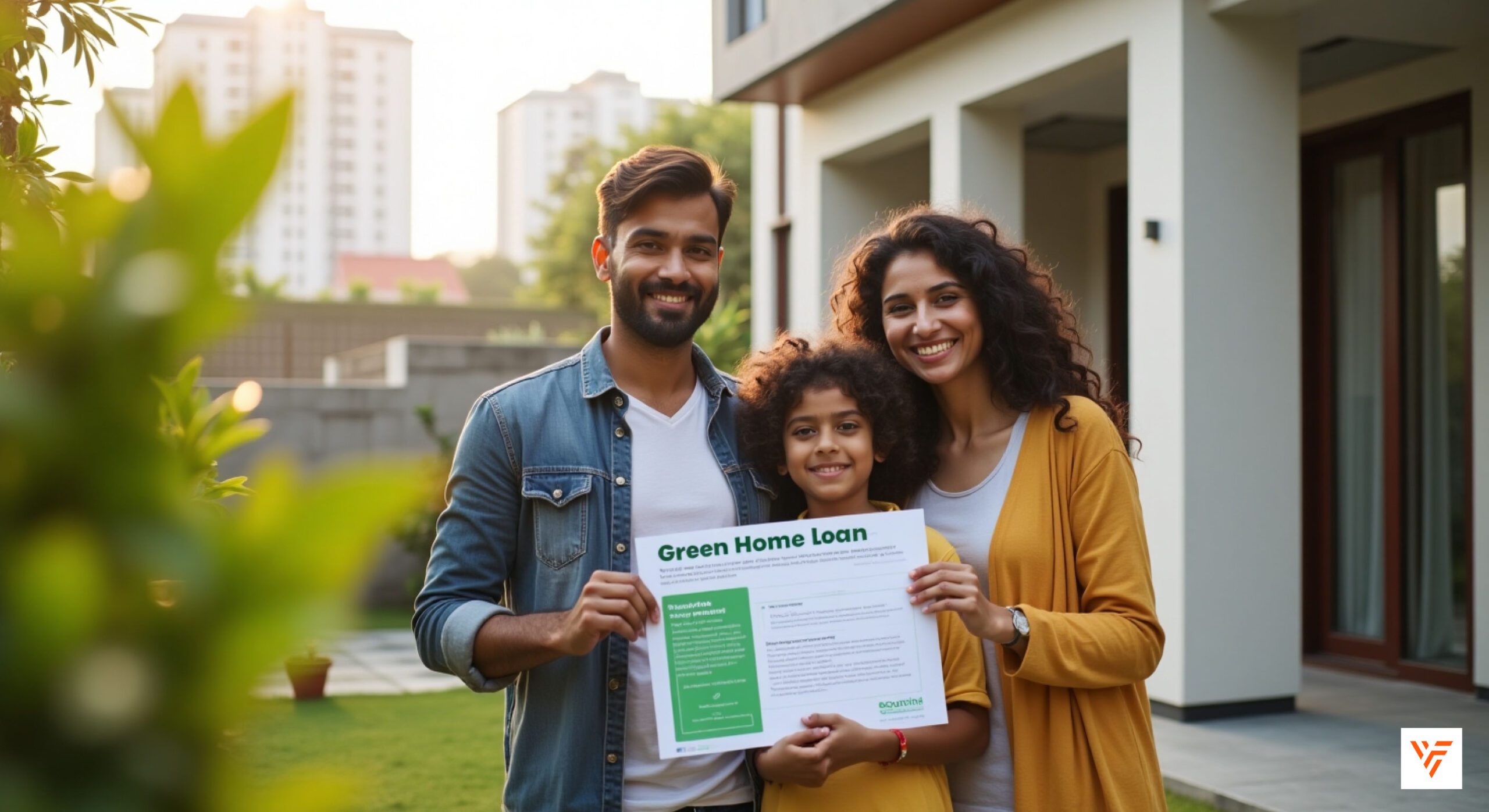In 2025, as India accelerates toward its net-zero emissions goal by 2070, green home loans are emerging as a powerful tool for homeowners to embrace eco-friendly living while enjoying financial perks. With urbanization surging—40% of India’s population will live in cities by 2030 (NITI Aayog, 2024)—and environmental concerns rising, green home loans incentivize sustainable housing. These loans, offered by banks like SBI, HDFC, and ICICI, support energy-efficient homes, aligning with India’s green building movement.
What Are Green Home Loans?
Green home loans are specialized financial products designed to fund the purchase, construction, or renovation of eco-friendly homes. These homes incorporate features like solar panels, rainwater harvesting, energy-efficient appliances, and sustainable materials, certified by bodies like the Indian Green Building Council (IGBC) or GRIHA. In 2025, with India’s green building market growing at 20% annually (FICCI, 2024), banks offer incentives like lower interest rates and higher loan amounts to promote sustainable housing.
As a sustainable finance expert, I’ve seen green home loans empower homeowners to reduce their environmental footprint while saving money. Whether you’re a first-time buyer in Bangalore or renovating in Pune, these loans offer unique advantages.
Why Green Home Loans Matter in 2025

India’s housing sector contributes 6% of national greenhouse gas emissions (TERI, 2024), making sustainable homes critical for climate goals. Green home loans align with government initiatives like the Pradhan Mantri Awas Yojana (PMAY) and RBI’s sustainable finance framework, launched in 2024. With 65% of homebuyers prioritizing eco-friendly features, per a 2024 Knight Frank survey, green loans are reshaping India’s real estate landscape, offering financial and environmental benefits.
Key Benefits of Green Home Loans
1. Lower Interest Rates
Green home loans often come with reduced interest rates, saving significant costs over the loan tenure. For example, SBI’s Green Home Loan offers rates 0.25-0.50% lower than standard loans (6.5-7% vs. 7-7.5%, 2025). For a ₹50 lakh loan over 20 years, this could save ₹3-5 lakh in interest, per Moneycontrol estimates.
Actionable Tip: Compare green loan rates from SBI, HDFC, and Axis Bank to maximize savings.
2. Higher Loan Eligibility
Banks provide higher loan-to-value (LTV) ratios for green homes, often up to 90% compared to 80% for standard loans. This means you can borrow more for an eco-friendly property, easing the financial burden for young buyers or middle-class families in 2025.
Actionable Tip: Choose IGBC- or GRIHA-certified projects to qualify for higher LTV ratios.
3. Long-Term Cost Savings
Green homes reduce utility bills through features like solar panels, LED lighting, and water recycling. A 2024 GRIHA study shows green homes save 30-50% on electricity and water costs, translating to ₹50,000-₹1 lakh annually for urban households. These savings offset loan repayments over time.
Actionable Tip: Install solar panels or rainwater harvesting to maximize utility savings.
4. Environmental Impact

Green homes lower your carbon footprint, aligning with India’s net-zero goals. Energy-efficient homes use 20-30% less electricity, per TERI, reducing reliance on fossil fuels. In 2025, with rising awareness of climate change, green loans support sustainable living without compromising comfort.
Actionable Tip: Opt for homes with green certifications to contribute to environmental goals.
5. Government Incentives and Tax Benefits
Green home loans often qualify for tax deductions under Section 24 (interest) and Section 80C (principal) of the Income Tax Act, similar to standard home loans. Additionally, PMAY offers subsidies up to ₹2.67 lakh for eco-friendly affordable housing. Some states provide property tax rebates for green homes in 2025.
Actionable Tip: Consult a chartered accountant to maximize tax benefits on your green loan.
6. Enhanced Property Value
Green homes have higher resale value due to their sustainability and lower operating costs. A 2024 Knight Frank report notes green-certified properties command 10-15% higher prices in cities like Delhi and Mumbai. This makes green loans a smart investment for long-term wealth.
Actionable Tip: Choose projects in high-demand areas like Bangalore’s IT corridors for better resale potential.
7. Health and Well-Being
Green homes prioritize natural lighting, ventilation, and non-toxic materials, improving indoor air quality and health. A 2024 Apollo Hospitals study links sustainable homes to a 25% reduction in respiratory issues, crucial in India’s polluted urban centers.
Actionable Tip: Look for homes with cross-ventilation and low-VOC paints for healthier living.
Key Benefits of Green Home Loans
| Benefit | Description | Impact |
|---|---|---|
| Lower Interest Rates | 0.25-0.50% lower than standard loans. | Saves ₹3-5 lakh over 20 years. |
| Higher Loan Eligibility | Up to 90% LTV for green homes. | Eases financing for eco-friendly properties. |
| Cost Savings | 30-50% reduction in utility bills. | Saves ₹50,000-₹1 lakh annually. |
| Environmental Impact | Reduces carbon footprint by 20-30%. | Supports India’s net-zero goals. |
| Government Incentives | Tax deductions and PMAY subsidies. | Enhances affordability and savings. |
Challenges of Green Home Loans
- Limited Availability: Not all banks offer green loans, and options vary by region. Research major lenders like SBI or HDFC.
- Higher Upfront Costs: Green features like solar panels increase initial costs, though savings accrue over time.
- Certification Requirements: Loans often require IGBC or GRIHA certification, limiting project choices.
- Awareness Gaps: Many buyers are unaware of green loan benefits. Banks must improve outreach in 2025.
Actionable Tip: Verify lender eligibility criteria and project certifications before applying.






3 thoughts on “Green Home Loan Benefits in India 2025: Building a Sustainable Future”